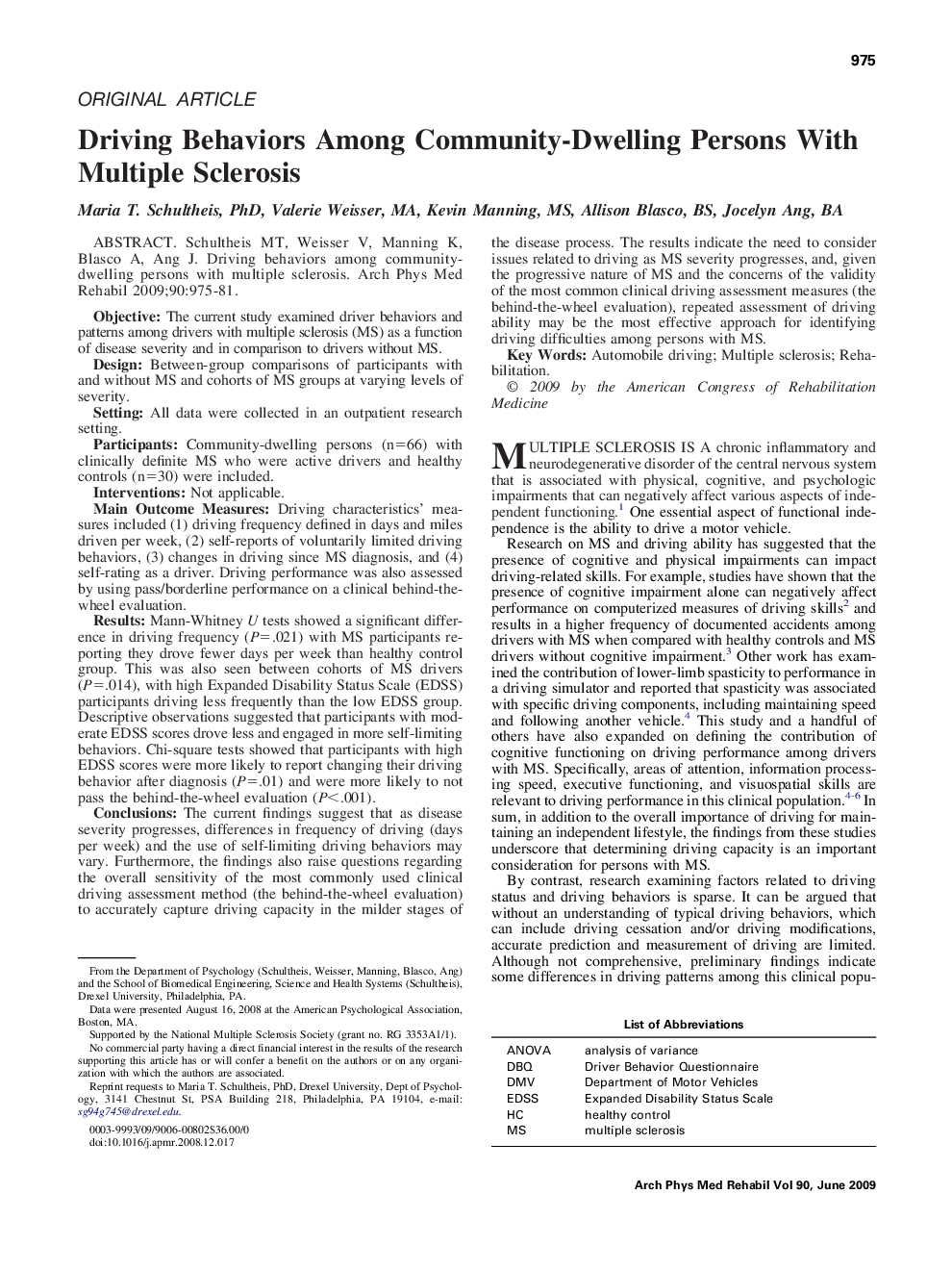| کد مقاله | کد نشریه | سال انتشار | مقاله انگلیسی | نسخه تمام متن |
|---|---|---|---|---|
| 3451506 | 1595765 | 2009 | 7 صفحه PDF | دانلود رایگان |

Schultheis MT, Weisser V, Manning K, Blasco A, Ang J. Driving behaviors among community-dwelling persons with multiple sclerosis.ObjectiveThe current study examined driver behaviors and patterns among drivers with multiple sclerosis (MS) as a function of disease severity and in comparison to drivers without MS.DesignBetween-group comparisons of participants with and without MS and cohorts of MS groups at varying levels of severity.SettingAll data were collected in an outpatient research setting.ParticipantsCommunity-dwelling persons (n=66) with clinically definite MS who were active drivers and healthy controls (n=30) were included.InterventionsNot applicable.Main Outcome MeasuresDriving characteristics' measures included (1) driving frequency defined in days and miles driven per week, (2) self-reports of voluntarily limited driving behaviors, (3) changes in driving since MS diagnosis, and (4) self-rating as a driver. Driving performance was also assessed by using pass/borderline performance on a clinical behind-the-wheel evaluation.ResultsMann-Whitney U tests showed a significant difference in driving frequency (P=.021) with MS participants reporting they drove fewer days per week than healthy control group. This was also seen between cohorts of MS drivers (P=.014), with high Expanded Disability Status Scale (EDSS) participants driving less frequently than the low EDSS group. Descriptive observations suggested that participants with moderate EDSS scores drove less and engaged in more self-limiting behaviors. Chi-square tests showed that participants with high EDSS scores were more likely to report changing their driving behavior after diagnosis (P=.01) and were more likely to not pass the behind-the-wheel evaluation (P<.001).ConclusionsThe current findings suggest that as disease severity progresses, differences in frequency of driving (days per week) and the use of self-limiting driving behaviors may vary. Furthermore, the findings also raise questions regarding the overall sensitivity of the most commonly used clinical driving assessment method (the behind-the-wheel evaluation) to accurately capture driving capacity in the milder stages of the disease process. The results indicate the need to consider issues related to driving as MS severity progresses, and, given the progressive nature of MS and the concerns of the validity of the most common clinical driving assessment measures (the behind-the-wheel evaluation), repeated assessment of driving ability may be the most effective approach for identifying driving difficulties among persons with MS.
Journal: Archives of Physical Medicine and Rehabilitation - Volume 90, Issue 6, June 2009, Pages 975–981